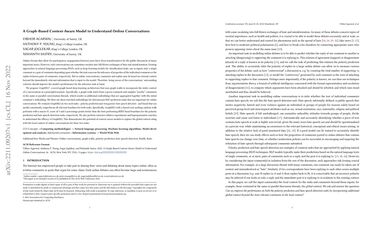A Graph-Based Context-Aware Model to Understand Online Conversations
Online forums that allow for participatory engagement between users have been transformative for the public discussion of many important issues. However, such conversations can sometimes escalate into full-blown exchanges of hate and misinformation. Existing approaches in natural language processing (NLP), such as deep learning models for classification tasks, use as inputs only a single comment or a pair of comments depending upon whether the task concerns the inference of properties of the individual comments or the replies between pairs of comments, respectively. But in online conversations, comments and replies may be based on external context beyond the immediately relevant information that is input to the model. Therefore, being aware of the conversations' surrounding contexts should improve the model's performance for the inference task at hand. We propose GraphNLI, a novel graph-based deep learning architecture that uses graph walks to incorporate the wider context of a conversation in a principled manner. Specifically, a graph walk starts from a given comment and samples "nearby" comments in the same or parallel conversation threads, which results in additional embeddings that are aggregated together with the initial comment's embedding. We then use these enriched embeddings for downstream NLP prediction tasks that are important for online conversations. We evaluate GraphNLI on two such tasks - polarity prediction and misogynistic hate speech detection - and found that our model consistently outperforms all relevant baselines for both tasks. Specifically, GraphNLI with a biased root-seeking random walk performs with a macro-F1 score of 3 and 6 percentage points better than the best-performing BERT-based baselines for the polarity prediction and hate speech detection tasks, respectively.
PDF Abstract
